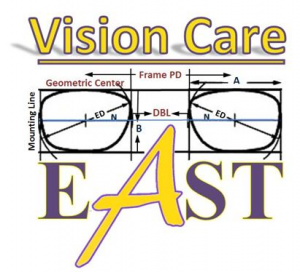With Career Technical Education (CTE) gaining attention across states as a key element of the college- and career-ready agenda as evidenced by more state legislatures and boards of education taking action to increase access to and the quality of CTE, NASDCTEc is excited to launch a new blog series tracking major policy developments from across the nation.
North Carolina’s Graduation Requirements
The North Carolina State Board of Education approved a set of endorsements for their high school graduation requirements, first mandated under legislation that passed earlier this year. Specifically, students can earn the Career Endorsement, College Endorsement, and/or Academic Scholars Endorsement.
All three endorsements require students to complete the Future-Ready Core requirements in mathematics (which are aligned to the Common Core State Standards) and earn at least a 2.6 GPA (which guarantees graduates’ placement into credit-bearing courses at the state’s community colleges). Students earning a career endorsement must complete a CTE concentration, earn an industry-recognized credential, and take a fourth year of math aligned to their post-high school plans. Students earning a college endorsement must take a fourth year of math that meets the minimum requirements for UNC universities, two years of world language, and three units of science. Students may earn more than one endorsement and the endorsements are not required to earn a diploma.
This model of endorsements, as opposed to the one recently approved by Florida, guarantees that all students still complete the Common Core State Standards and are being prepared for credit-bearing, college-level coursework.
North Carolina also has a bill moving through the General Assembly that would offer bonuses to schools and teachers for each student who earns an approved industry certification or credential. House Bill 968, or “Increase Successful CTE Participation,†would also provide funds to students to cover the cost of those certifications or credentials. We’ll provide more information on this bill as it advances through the legislative process.
Georgia’s College- and Career-Ready Performance Index (CCRPI)
This month, Georgia unveiled the first results from its new statewide accountability system, the College- and Career-Ready Performance Index. This system is replacing Adequate Yearly Progress (AYP) under Georgia’s Elementary and Secondary Education Act (ESEA) waiver. Each school is now rated on a 100 point scale, informed by a wide array of performance indicators beyond statewide assessment scores.
Specifically, at the high school level, the CCRPI takes a number of CTE-related activities and indicators into account, including the percentage of students completing a CTE pathway; CTE pathway completers earning an industry-recognized credential or passing a state-recognized end-of-program technical assessment; graduates earning dual credit; and graduates completing a career-related work-based learning program or capstone project. All together, the set of “post high school readiness†indicators account for up to 21 points.
Schools can also get additional points for earning a science, technology, engineering and mathematics (STEM) program certification or enrolling students in a college and career academy. To see results at the state, district or school level, see here.
Kentucky’s CTE Governance
Governor Steve Beshear signed a bill this month that united the state’s two Career and Technical Education (CTE) systems under the guidance of Kentucky’s Department of Education. Under the former system, both the Kentucky Board of Education and Kentucky Community and Technical College System set policies around CTE that were sometimes complementary and sometimes redundant.
The legislation also establishes a CTE Advisory Committee that will provide guidance in the design and implementation of programs that give all students the best possible opportunity for career preparation in a unified system.
The legislation actually was originally passed through an executive order by the Governor in August 2012 but now has gone through a more traditional legislative approval process. Learn more about House Bill 207 here.
Kate Blosveren, Associate Executive Director







 Students have also had the opportunity to talk with employees of Rochester Optical, as well as touring their production facility and dispensing shop. Students stated the time was useful because they got to see the skills they were using in class in use as a job. (Photo of group tour at right)
Students have also had the opportunity to talk with employees of Rochester Optical, as well as touring their production facility and dispensing shop. Students stated the time was useful because they got to see the skills they were using in class in use as a job. (Photo of group tour at right)